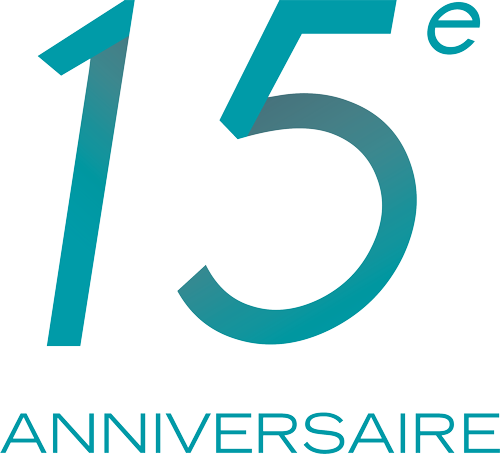Welcome to the borough of Lachine
REALTA, your Montreal real estate agency, invites you to explore the borough of Lachine. Located southwest of Montreal, where the canal of the same name meets the St. Lawrence River, Lachine is an area that harmoniously blends history and modernity, offering a living and working environment that appeals to businesses and individuals alike. Whether couples, families, young professionals or retirees, Lachine is universally appreciated for its quality of life. It’s also a popular destination for tourists looking to spend some quality time in one of the Big Island’s charming spots. What would you say to a visit?
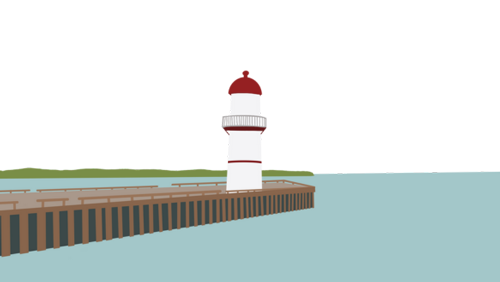
Where is the borough of Lachine located?
On the southwest shore of the island of Montreal, the borough of Lachine is bordered to the northwest by Dorval, to the north by Côte-St-Luc and to the northeast by the municipality of Montreal West. To the east is the borough of LaSalle. The Lachine Canal, to the southeast, naturally delimits Lachine from LaSalle, while the St. Lawrence River runs along its entire southern border. From its eastern border, Lachine is some 10 kilometers from downtown Montreal, which can be reached by car in about 15 minutes, depending on traffic conditions. With a surface area of 20 km2, its territory is home to a population of 46,428 (2021). Saint-Pierre and Lachine first joined forces in 2000. Two years later, the new Lachine became a borough of Montreal, ranking 16th out of 19 for population size.
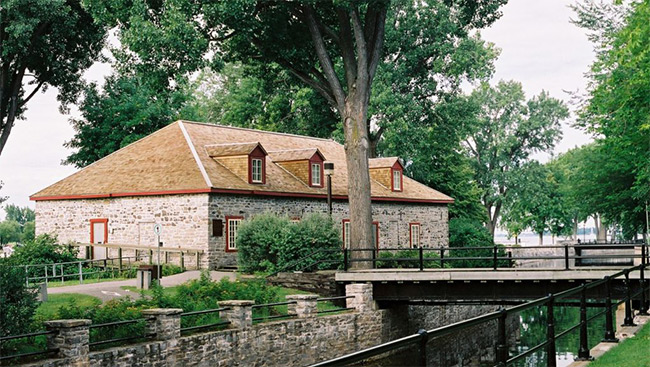
A must-see! Visit the Lachine Fur Trade National Historic Site - Parks Canada, starting in June. Discover an authentic fur and trade goods warehouse built in 1803. From your first steps, you'll take a 200-year leap back in the history of Lachine and Canada. Take advantage of your visit to discover Old Lachine and its famous canal.
A quiet, industrialized borough
According to the testimonials available online, Lachine is unanimously appreciated for its quality of life. For example, the Union française de Montréal describes it as an essentially residential, quiet and family-friendly neighborhood. The following elements contribute significantly to its reputation: beautiful riverside parks, historic buildings, high-quality sports and cultural facilities, and renowned schools. In addition, revitalization initiatives such as the Écoquartier Lachine-Est and the Saint-Pierre Inclusive and Resilient Neighborhood Project aim to enhance these qualities by creating an attractive, ecological, healthy and sustainable living environment, supported by a dynamic economic sector (shops and services) and an efficient, environmentally-friendly transportation system.
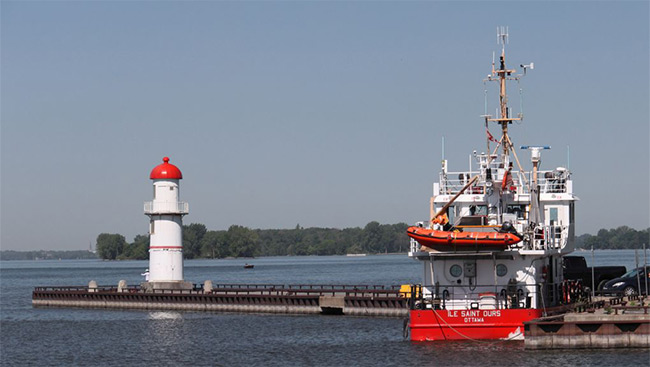
Where does the name Lachine come from? Originally called Saint-Sulpice, Lachine was originally a seigneury granted to René Robert Cavelier de La Salle. He set out to discover the route to China. The expedition was unsuccessful, so Saint-Sulpice was humorously nicknamed.

2017 marked Lachine's 350th anniversary, an event it celebrated at the same time as Montreal. The departure of Cavelier de La Salle from Côte Saint-Sulpice, on July 6, 1669, can be seen here. Drawing from Désiré Girouard's book Lake St.Louis old and new, illustrated and Cavelier de La Salle (1893) Source: Ville de Montréal, Capsules historiques
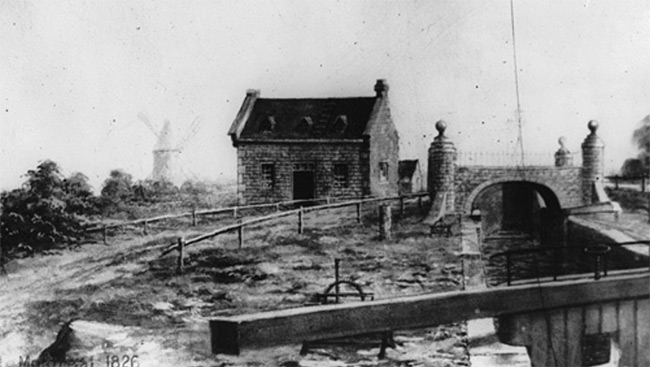
History
Lachine is one of Quebec’s oldest settlements, with the arrival of the first French colonists in 1662. The areas we identify today as Dorval, Lachine and LaSalle were acquired in 1672 by seigneur René-Robert Cavelier de LaSalle. However, settlement was not without conflict. During the 17th century, persistent tensions marked relations between French settlers in the St. Lawrence Valley, their native allies (Algonquins, Micmacs, Innus, Anichinabés, Abenakis and Malecites) and the Iroquois. Against this tense backdrop, Lachine was the scene of an Iroquois attack on August 5, 1689. To get to the bottom of the story, we invite you to listen to the audio report: Le massacre de Lachine raconté par Éric Bédard – Radio Canada.
December 24, 1872 marked the official incorporation of the City of Lachine, following a request from the residents. At that time, it was established that municipal elections would be held annually in January, with a one-year term for the mayor and a two-year term for the councillors. Today, general elections, whether provincial, municipal or school board, are generally held every four years.
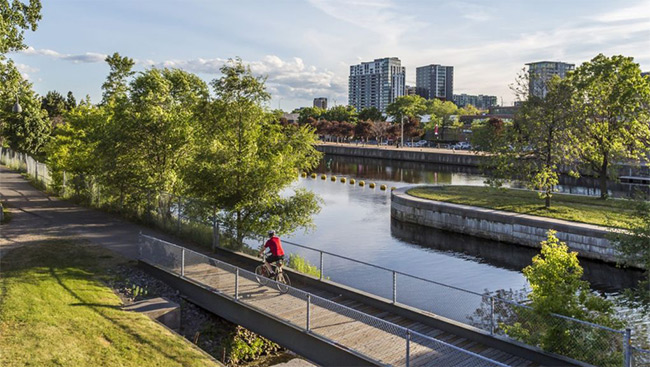
Lachine Canal
Built between 1821 and 1825, the Lachine Canal played a crucial role in the local and national economy, bypassing the perilous rapids of the St. Lawrence and securing the transport of goods between Montreal and the Great Lakes. This corridor was an important lever for trade, industrialization, job creation and urban expansion, marking a key episode in Canada’s economic history and remaining an essential element of river navigation during this period.
Following the opening of the St. Lawrence Seaway in 1959, the Lachine Canal lost its key industrial role, leading to its closure and the disappearance of the industries it had attracted, notably in what is now the Lachine-Est district. Transformed into a must-see recreational area, the canal now offers 13.5 kilometers of lush green trails linking the Old Port to Lake Saint-Louis, perfect for strolling and exploring. Lined with witnesses to its industrial past, the waterway lends itself to a multitude of outdoor and nautical activities. The banks of the canal, enlivened by a variety of events and cultural activities, have become dynamic and welcoming places. Today, the Lachine Canal attracts a wide range of visitors, offering an ideal setting for family getaways, bike rides or moments of relaxation.

The city of iron and steel
With the rise of the Lachine Canal, the area attracted steel companies between 1867 and the early 20th century, giving rise to the area now known as La Cité du fer et de l’acier, or Lachine-Est. This area, bordered by the Lachine Canal, Chemin de la Côte-Saint-Paul, 1st Avenue and 14th Avenue, saw its industrial development accelerate with the establishment of the Dominion Bridge Company Limited in 1883. This company was founded to capitalize on the opportunities generated by the expansion of the Canadian Pacific rail network. Other major industrial complexes were added, including Dominion Wire and Dominion Wire Rope, whose structures are still partly visible today. Today, in the section between Verdun and Lasalle, many industrial buildings along the canal have been preserved and converted into lofts and offices. The Lachine-Est project is at the heart of a major redevelopment project, which will include the integration of the remnants of this industrial era.
Neighborhoods

The Saint-Pierre district is covered by several heat islands. The aim of the Revitalisation Saint-Pierre project is to develop spaces with greening potential so that̀ the neighborhood will have cleaner, greener and more user-friendly spaces.
Saint-Pierre district
Remnants of the former town of Saint-Pierre, founded in 1894, the neighborhood is located in northeast Lachine and is home to over 5,200 inhabitants spread over an area of 2.15 km2. Surrounded by imposing transportation infrastructures (viaducts, highway, railroad), the district is physically isolated from the rest of the borough, severely limiting interaction with neighboring areas. Fortunately, the Saint-Pierre district is one of the first three areas in Montreal to become an “inclusive and resilient district” (QIR). This new approach by the City of Montreal aims to reduce inequities in the city’s most vulnerable neighborhoods. Saint-Jacques and Dollard streets are the main commercial arteries.

Following the example of Ateliers Angus, a true inspiration for the east end of Montreal, the Lachine-Est sector, the cradle of Canadian industrialization, will be transformed into a brand-new urban district. Source: Borough of Lachine - Youtube channel
Lachine East
The urban plan for the Lachine-Est eco-neighborhood favors heritage conservation, greenery and sustainable mobility. The project calls for the construction of nearly 7,800 homes, including affordable social housing adapted to families, as well as 223,000 m² of economic activity zones. Approximately 22% of the developable area will be dedicated to parks and public spaces, aimed at mitigating heat islands and optimizing stormwater management. More than three kilometers of pedestrian and bicycle paths are planned, with the possibility of a public transport service. Subsequent phases include a review of urban planning standards, technical studies and talks to establish an elementary school and sports complex.

Lachine West
Located in the western part of the borough, this neighborhood runs from north to south, encompassing the Fort-Rolland electoral district and the western portion of the Le Canal district. It is distinguished by a diversity of urban elements, combining varied housing, commercial sectors and green spaces. Lively thoroughfares such as 38th Avenue, 41st Avenue and 55th Avenue, as well as Victoria Street and St. Joseph Boulevard, are the main centers of activity. There are also several riverside parks, including Summerlea, Sorley Point and Saint-Louis. The latter is home to the Lachine Lighthouse, offering one of the most impressive views of the Montreal sunset. The area bounded to the south by the A20 and to the north by Highway 520 is emerging as a center of economic activity, hosting a variety of businesses and Canadian National facilities.
Using photos, videos and 3D modeling, this video presents the residential, commercial and tourism development potential of Old Lachine and the future Lachine-Est eco-district.
Source: Borough of Lachine – Youtube channel
Old Lachine
Old Lachine is the borough’s historic center, representing one of Montreal’s oldest areas, established in 1667 as a fur-trading post. This area invites you to explore Sainte-Anne’s Church, erected in 1703, and the Musée de Lachine, which illustrates the community’s past. Over time, this area became the village of people working on the Lachine Canal and in the steel industry. Today, after more than 350 years, Vieux-Lachine has preserved its village feel, with cobbled streets, stone mansions and historic buildings refurbished as restaurants, art galleries and craft stores. Stroll along rue Notre-Dame, rue Saint-Louis and boulevard Saint-Joseph, between 7th and 20th avenues, and you’ll discover old buildings from the French and English periods.
Another not-to-be-missed feature of Old Lachine is the Old Canal. Its banks have been converted into a linear park, much appreciated by walkers. It used to be a way for boats to avoid the Lachine rapids. Today, you can walk or cycle along its banks and admire the locks. It’s a major tourist attraction. Old Lachine celebrates its rich heritage every August at the Festival de l’Île-Paroisse, with historical re-enactments, crafts, music and gastronomy.
The borough in figures
- Population: 45,743, 2,584 inhabitants per km².
- Average age: 42 versus 38.6 for Montreal as a whole
- Surface area: 17.7 km²
- Persons per household: 2.1 persons per household on average
One-person households: 40% – Two-person households: 29% Three-person households: 14% – Three-person households: 14 - Average income: $40,620.00
- Renters: 57%
- Owners: 43%
- Immigration: almost 23% of residents are foreign-born
- Languages spoken: 59% French, 30% English only and 11% other languages
- People with college or university diplomas in the 25-64 age group: 43%.
- 62% of the borough’s working population drive a car to work, while 6% use the car as a passenger. Nearly 22% of workers use public transit and 8% walk to work. People who cycle to work account for 1% of the active population.
- 1 cultural center
- 2 libraries
- 49 parks and green spaces
- 23 soccer fields
- 3 community gardens
- 2 arenas
- 8 outdoor skating rinks
- 3 indoor pools
- 3 outdoor pools
- 3 outdoor children’s pools
- 3 water play areas
- 9 baseball fields
- 20 tennis courts
- 5 pickleball courts
- 2 skate parks
- 1 performance and exhibition hall
- 1 public market
- 1 museum
- 11 historic sites
- 5 hiking trails
- 1 cross-country ski trail
- 1 beach volleyball court
- 1 outdoor dance floor
- 1 athletics track
For its commercial streets

Notre-Dame Street
It’s the borough’s main commercial artery, with over 130 shops, services and specialized organizations. It’s also part of the heart of Old Lachine, with its many historic buildings, including the Public Market, opened in 1845 (corner of 18th Avenue). The section between 6th and 19th avenues is the focus of a revitalization project designed to transform Notre-Dame into a civic space that reflects the people of Lachine.

Victoria Street
This street crosses the borough from east to west. The commercial section is located mainly in the downtown area, and is home to boutiques, garages, cafés and restaurants. There are also medical and dental clinics. For a break, there’s the large Parc Lasalle.

Saint Joseph Boulevard
This boulevard runs alongside the St. Lawrence River and Lac Saint-Louis, and is linked to boulevard Lasalle in the borough of the same name, and to Lakeshore Road in the City of Dorval. It is the main access route to the Old Canal and waterfront parks. The Vieux-Lachine area is home to restaurants and boutiques of all kinds. Collège Saint-Anne (primary/secondary/college), with its 3,700 students and 475 staff members, has been providing a lively atmosphere since 1861. L’Entrepôt, Maison de la culture is also a major attraction on the boulevard.

Remembrance Street
Located between Parc Lasalle and Victoria Street, this small thoroughfare is home to Galeries Lachine (45 stores) and two major food banners.
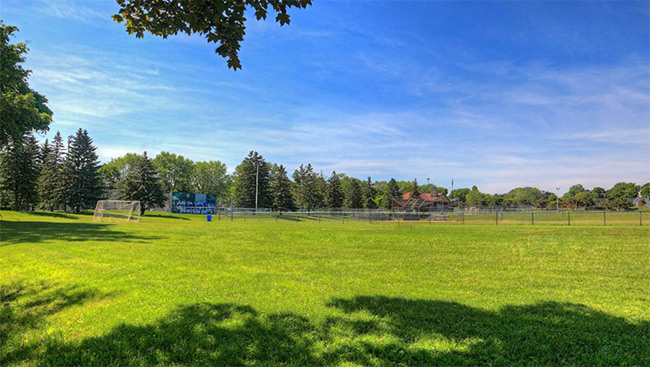
Provost Street
Located between rue Victoria and avenu George V, rue Provost is home to some sixty businesses. These include convenience stores, professional services and restaurants. There are several schools and four parks.
Lachine's main attractions
Lachine offers many attractions that will interest residents and day-trippers alike. Whether you’re interested in history, culture, nature or just plain fun, there’s something of interest for everyone in Lachine. Here are the main attractions, and as you explore these, you’ll find many more:
Lachine Canal:
This historic canal, a UNESCO World Heritage Site, offers picturesque walks, bike paths, locks and seasonal events.
Lachine Canal multi-purpose trail:
The Lachine Canal, built in 1825 to bypass the rapids, stretches 14.5 km between the Old Port and Lake Saint-Louis. It is both an inland waterway and an urban park rich in history.
Fur Trade at Lachine National Historic Site:
Built in 1803, this old “stone shed” is an important witness to Montreal’s fur trade epic.
René-Lévesque Park:
This park offers spectacular views of the St. Lawrence River, hiking trails, picnic areas, sports fields and an open-air amphitheatre.
Lachine Museum:
Located on the banks of the St. Lawrence River, this museum invites you to discover the history of the Maison Le Ber-Le Moyne. The museum features exhibits on the history and culture of Lachine, including First Nations, navigation and industry.
Lachine Market:
This open-air market offers fresh produce, local crafts and special events.
Old Lachine:
This historic district is home to 19th-century buildings, art galleries, unique boutiques, restaurants and cafés.
Lachine Music Festival:
A dozen free concerts a year for 45 years, over 500 concerts featuring 6,000 artists and musicians? This is the rich heritage of the Lachine Classical Music Festival organized by Concerts Lachine.
Making lachine dance
The Borough of Lachine presents Faire danser Lachine. Directed by Maude Lecours, choreographer and creator of Faire danser un village, the video benefits from the collaboration of 230 Lachinois and Lachinoises who dance in various symbolic places of the territory to the sound of the song Au rythme de l’eau, custom-composed by Lachine-born singer-songwriter Joseph Boonen.
This video highlights some of Lachine’s attractions. But above all, it highlights the people who live here. People of all ages and backgrounds, merchants, Borough staff and SIM (fire station 64) gathered in a variety of locations to show their attachment to Lachine… by dancing!
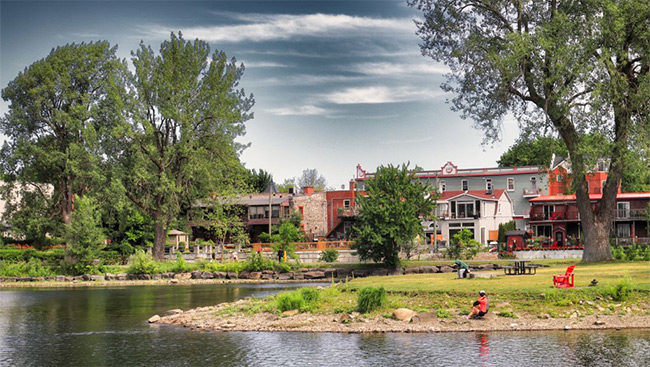
Let's talk real estate in Lachine
As highlighted in this presentation, the borough of Lachine offers an enriching living environment that blends historical heritage with urban vitality. Framed by the Lachine Canal and Lake Saint-Louis, it boasts abundant green spaces, including parks along the shoreline, ideal for families and nature lovers. There are also excellent schools, as well as a variety of shops and professional services. Finally, its proximity to downtown and promising urban development projects make Lachine an attractive choice for real estate investment and relocation.
Real estate, an important financial asset
Buying a home is a type of asset that can represent a significant financial value in a person’s life. It can generate income, appreciate in value over time and/or offer protection against inflation. Since 2011, Montreal’s real estate market has grown by leaps and bounds. In Lachine, the median price of single-family homes has doubled, while that of condos has risen significantly, offering owners a substantial return on their investment. The growth in property values is even greater when compared with 2001 prices.
As the following table shows, real estate prices in Lachine remain attractive when compared to other Montreal neighborhoods or neighboring cities. Single-family homes make up the majority of properties in Lachine, with a variety of styles including bungalows, cottages and townhouses. Prices vary according to sector, age and size. According to Centris, the median price of single-family homes in Lachine was $666,000 for the cumulative last four quarters of 2023. It ranks 12th in our sample of 15 local boroughs and cities. The supply of condos in Lachine is more limited, but growing. Prices vary according to condo type, location and inclusions. According to Centris, the median condo price in Lachine was $375,000 for the cumulative last four quarters of 2023. Here again, the results show that condo prices in Lachine remain among the lowest in our sample.
Median price
Single-family homes
Source : Centris
Update : September 2025
Median price
Condominium
Source : Centris
Update : September 2025
Lachine, my real estate agency is Realta!
If you’re looking to buy or sell a property in the Lachine borough, don’t hesitate to contact one of REALTA’s professional real estate brokers. He’ll be there to guide and advise you every step of the way. REALTA real estate brokers are familiar with the local Lachine market and have the tools they need to assess a property’s value, negotiate the best price and draw up the legal documents. You can trust our experts to make your real estate dream come true!

Information sources and useful links
- City of Montreal website
- Lachine Borough Council website
- Borough of Lachine website
- Lachine Canal National Historic Site
- Evaluation of Lachine’s urban heritage – Digital BanQ
- L’eau au cœur de l’arrondissement de Lachine
- The Lachine Canal and its neighbourhoods – L’autre Montréal
- Lachine – Historical capsules
- Lachine-Est – Le berceau industriel où on rêve d’un écoquartier – La Presse
- Lachine-Est eco-district
- Follow the Lachine Canal
- Info à Lachine – Facebook Group
- The Lachine Canal by bike! – Capitaine Montréal
- Mes quartiers – Lachine – Gilles Beaudry’s blog
- Notre-Dame Street in Lachine
- Lachine Historical Society – Facebook Page
- Lachine : le bout du monde est si près – Article Le Devoir
- Collège Sainte-Anne
- Lachine’s Graffiti program
- Saint-Pierre City
- Revitalizing Saint-Pierre
- Centris – Lachine – Real estate statistics
- Palmarès des quartiers de Montréal: detailed evaluation of the 40 neighborhoods
